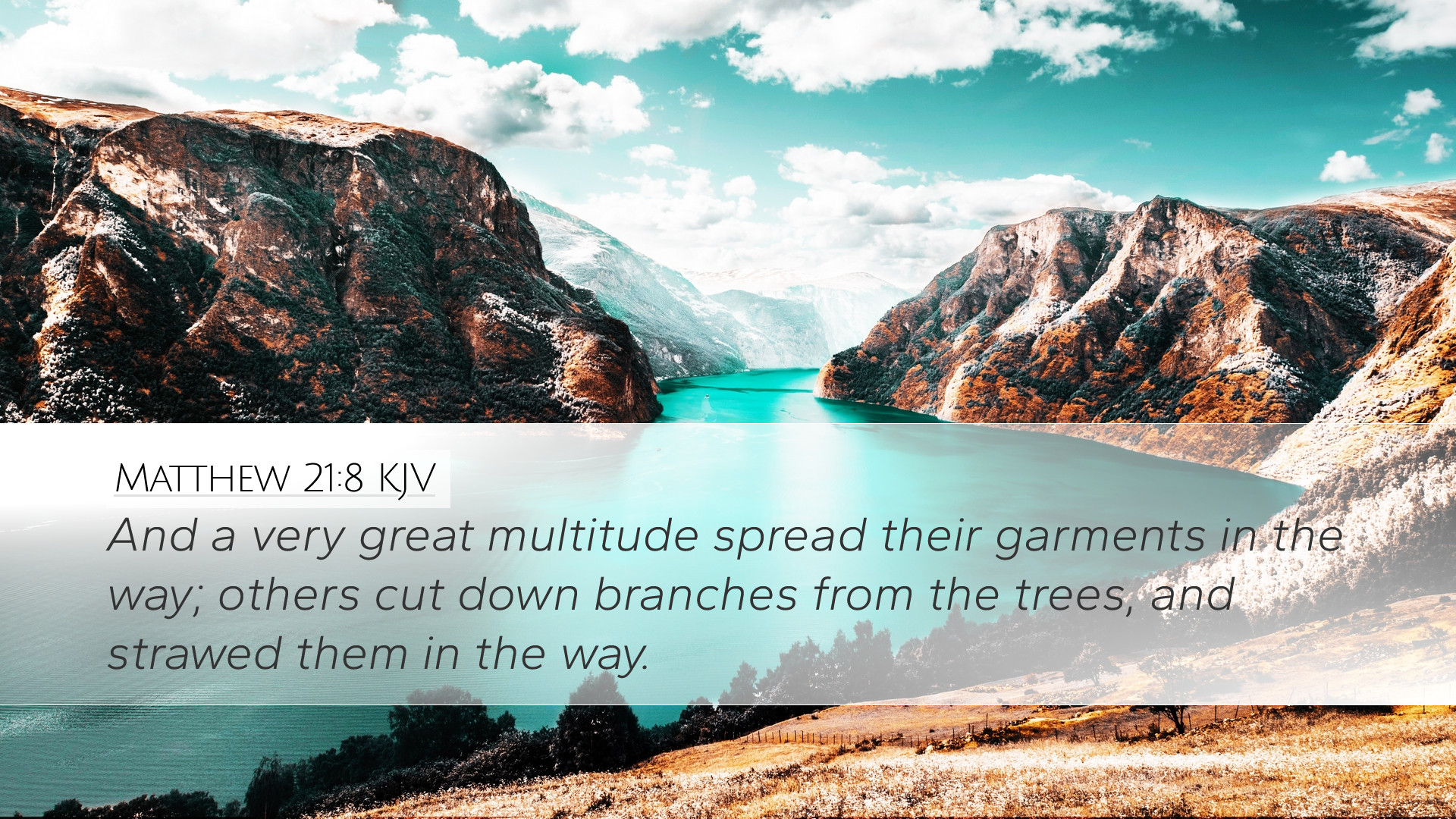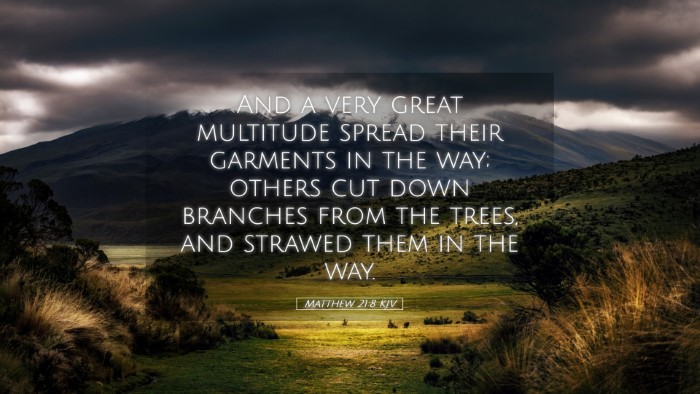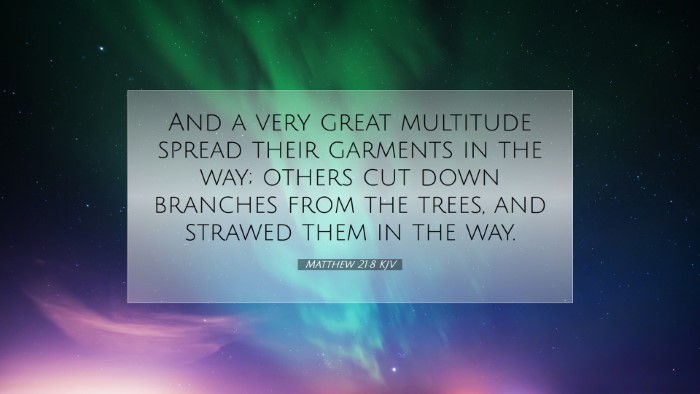Commentary on Matthew 21:8
Verse Text: "And a very great multitude spread their garments in the way; others cut down branches from the trees, and strawed them in the way."
Introduction
This passage is part of the triumphal entry of Jesus into Jerusalem, marking the culmination of His earthly ministry and the ushering in of the final events leading to His crucifixion and resurrection. Notably, the actions of the multitude are laden with symbolism and fulfillment of prophecy, making this a pivotal moment in the Gospels.
Contextual Overview
This event occurs shortly before Passover, a time when Jerusalem was filled with pilgrims. The crowd's response to Jesus as He rides into the city is significant as it demonstrates varied expectations of the Messiah.
Commentary Insights
Matthew Henry's Commentary
Matthew Henry emphasizes the humble nature of Jesus' entrance. Rather than coming in a chariot like earthly kings, Jesus rides on a donkey, fulfilling the prophecy found in Zechariah 9:9. This act reveals His mission—one of peace rather than war, as a king who does not come with force but in gentleness.
The act of the multitude laying down their garments and branches symbolizes honor and respect, indicating their recognition of Jesus' authority and messianic identity. Henry notes that such actions are typical of honoring distinguished persons and suggest the people's fervent hopes in Jesus as a political liberator.
Albert Barnes' Notes
Albert Barnes clarifies that the great multitude serves to show the public's enthusiasm and recognition of Jesus as the Messiah. His comment suggests that the action of spreading garments and palm branches reflects a fulfillment of messianic prophecy, as these gestures were traditionally used for royalty.
Barnes sheds light on the fact that branches were taken from trees, particularly mentioning palm branches as symbols of triumph and victory. He connects this to the Jewish tradition of celebrating with branches during the Feast of Tabernacles, indicating a deep cultural significance.
Adam Clarke's Commentary
Adam Clarke provides an extensive analysis of the biblical and cultural background regarding the use of garments and branches. He identifies the acts as a response from a crowd that had witnessed Jesus' miracles, evidencing their faith and acknowledgment of His divine power.
Clarke also notes the significance of laying garments in oriental custom, elaborating that it signifies the submission of the people to the king. This act reflects their desire for deliverance, thus communicating their hope for political and spiritual redemption.
Theological Significance
The passage is rich in theological meaning. It introduces themes of messianic humility and the nature of Christ's kingship. Jesus enters Jerusalem in a manner that defies worldly expectations, which serves as an admonition to contemporary readers about the nature of true leadership and honor in God’s kingdom.
Fulfillment of Prophecy
Understanding this event necessitates acknowledging its prophetic fulfillment. In Zechariah 9:9, the prophecy about a king coming humble and riding on a donkey is evident. This connection provides a stronger foundation for recognizing Jesus not just as a political figure but as the long-awaited Messiah, fulfilling the Scriptures.
Applications for Modern Readers
- Recognition of Jesus' Authority: Just as the crowd recognized Jesus’ messianic role, readers today are called to acknowledge and submit to His lordship in their lives.
- The Call to Humility: Jesus demonstrates that true greatness in God’s kingdom often involves humility and service, encouraging believers to reflect those values in their own lives.
- Faith in the Unseen: The crowd’s recognition of Jesus’ power encourages believers to trust in His promises, even when circumstances may appear dire.
- Understanding Worship: The actions of the crowd serve as a model for worship, reflecting the joy and reverence that should be present when approaching God.
Conclusion
The triumphal entry of Jesus into Jerusalem is a profound moment laden with meaning and significance. The actions of the multitude illustrate the common longing for deliverance, the fulfillment of prophecy, and a rich tapestry of worship that transcends generations. As we reflect on this passage, may we embrace the lessons of humility, servitude, and the true nature of Christ as our King.


